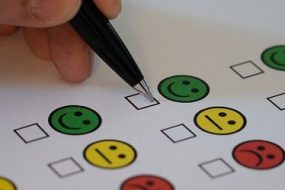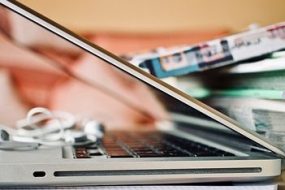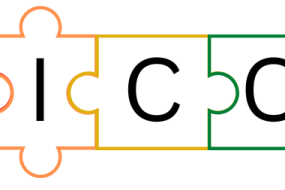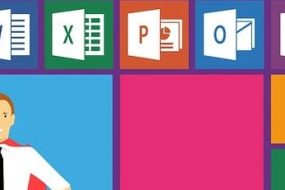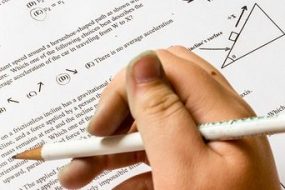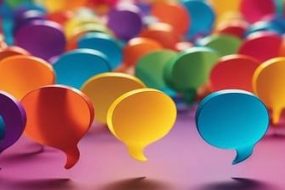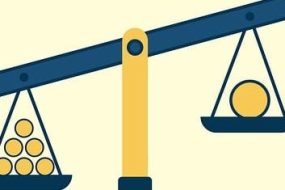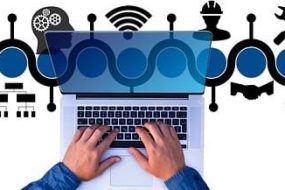Overview of Research Instruments
Whether you are writing a research proposal, project proposal, dissertation, capstone project, or thesis paper, research instruments play an important role in gathering requisite data.
Research instruments are usually used in social sciences, health sciences, and education to assess students, patients, staff, and clients.
Note that distinctive kinds of research studies demand the use of different types of research instruments.
Accordingly, projects such as business dissertations and medical research papers will usually demand the use of different research instruments altogether.
You are therefore required to decide on the most suitable research instrument to use in a particular study.
Table of Contents
- What are Research Instruments?
- Examples of Research Instruments
- Questionnaires
- Observations
- Interviews
- Focus Group Discussions
- Experiment
- Documents Analysis
What are Research Instruments?
You have to choose the right research instrument for your study.
To do this, you need a better understanding of what research instruments encompass?
This brings us to the question: “what are research instruments?”
Accordingly, research instruments can be defined as:
“Tools used in collecting, measuring, and analysing data related to a particular subject.”
Research instruments encompass measurement tools used in data collection in research.
Note that as a researcher you need to ensure that you employ the appropriate research instruments for data collection. This has to be for a specific data set.
Examples of Research Instruments
There are numerous types of research instruments available to a researcher.
The choice of the instrument(s) to use depends on a number of factors, including:
i. Research objective
ii. Nature of data
iii. Statistical significance
iv. Sample size
v. Timing
The combination of the above considerations should help you determine the most appropriate instrument to use.
That noted, common examples of research instruments utilized in collecting data include:
i. Questionnaires
ii. Observations
iii. Interviews
iv. Focus group discussions
v. Experiment
Questionnaires are considered the most common types of research instruments particularly in normative surveys.
As common examples of research instruments, they encompass numerous questions that seek responses from respective respondents as the source of research data.
Questions are systematically compiled and are in an organized series in order to enhance proper understanding of the issue under study.
When to Use Questionnaires as Research Instruments for Data Collection
i. When you need data from numerous people and resources are restrictive: dissemination of questionnaires is convenient and cost friendly.
This is considering that questionnaires can be administered via mail, email, and over the telephone.
ii. When discretion is of paramount importance: questionnaire answers can be made confidential or anonymous therefore concealing the identity of the respondent.
iii. When you want to collect data about beliefs, knowledge, behaviors, and attitudes: when using questionnaires, it is possible to collect information unique to individuals.
i. Structured questionnaires: these entail questions with some control. The questions are short and limit the respondent to specific options.
They require a specific answer from the respondent, usually “yes” or “no” or selecting and answer among provided options.
ii. Unstructured questionnaires: these questionnaires encompass open-ended questions without any form of restrictions.
The respondents have the freedom to provide answers in their words and can even express their opinions from different options provided in the questionnaire.
Observations are also good examples of research instruments.
They entail data collection methods where the researcher is part of the experience within which the phenomenon under study is being observed.
In using them as research instruments for data collection, the researcher is required to have minimal interference to avoid incidences of modified respondent behavior and enhance the collection of accurate information.
When to Use Observation as Research Instruments for Data Collection
i. When the topic under study is quite sensitive: when dealing with sensitive topics, people shy off from answering the research questions.
Observation is a suitable option in such incidences.
ii. When there is need to observe the phenomena: this applies in cases where it is important to observe such phenomena as behavior in order to arrive at certain conclusions.
iii. When you are not sure what you are looking for: observations can be used to provide an idea on what to study about certain phenomenon.
By observing, you can decide on what approach or theories to adopt in a study.
i. Participant observer: in this, the researchers conceal their identity as a researcher.
They live with the study subjects as they collect data about a particular phenomenon. The researcher enjoys first-hand experience in data collection.
ii. Non-participant observer: this involves the researcher watching the study subjects from a distance.
The researcher does not directly interact with the phenomenon under study. The subjects are usually not aware that they are under study.
Interviews are equally common examples of research instruments.
They require the researcher to talk directly with the respondent to gather information on an issue of mutual interest.
The researcher orally asks the respondent a question and then proceeds to record the oral answer provided.
When to Use Interviews as Research Instruments for Data Collection
i. When you need to explore the experiences, views, and beliefs of the respondents: interviews make it possible to qualitatively examine factors that influence human behavior in a particular way.
ii. When little is known about a phenomenon: interviews are quite effective in collecting detailed data about an issue that has not been effectively explored and as such offer a better platform for further study.
iii. When dealing with sensitive issues: interviews provide for confidentiality and respondents are able to discuss sensitive issues that could not be discussed in focus groups.
iv. When you want to explain statistical data or expound on an issue: through interviews you can collect adequate data that can be used to explain results produced in statistical analysis.
This is important in helping add a human dimension to the statistical data.
i. Structured interviews: these are founded on interview questionnaire where questions presented to the respondent and answers provided are recorded in a standardized manner.
A set pattern and question sequence is adhered to.
ii. Unstructured interviews: such interviews are quite informal and the researcher has the freedom to modify the sequence and wording of interview questions.
It is more casual and allows for more freedom and flexibility.
iii. Focus interviews: these rely on the subjective experiences and responses of the respondents in gathering information on the issue under study.
The interviewer participates in the process by stimulating the respondents to provide for more information.
iv. Non-directive interviews: these accord the interviewee more freedom to express their ideas subjectively and spontaneously based on their ability to or choice.
These are equally widely used examples of research instruments.
As examples of research instruments, focus groups entails the process through which a researcher acquires data from a large sample/ group of people concurrently.
The recommended number of individuals in a focus group is less than 10.
Note that it is one of the common types of research instruments in fields such as behavioral science, archival science, and library and information science.
When to Use Focus Discussion Groups as Research Instruments for Data Collection
i. When there is need to understand an issue in in-depth: Focus discussion groups are instrumental in gathering expansive data that cannot be accessed using a survey.
ii. When you intend to add meaningful or understand existing knowledge: They are effective when evaluating the “how” and “why” of a topic.
iii. When you need a dynamic setting: Focus groups can allow changes during group discussion to facilitate better results.
iv. When you need to gather information from non-verbal communication: Focus discussion groups can be used to gather further insights from gestures and stimulated activities.
Types of Focus Group Discussions
i. Dual-moderator: Entails the use of two moderators, with one charged with the responsibility of group smooth progression and the other coverage of all topics.
ii. Two–way: One group listens to another group that is answering questions put forward by the moderator. The listening groups facilitates more discussion.
iii. Respondent moderator:Participants (one or two) in the group discussion act as moderators. It helps change group dynamics and produce different responses.
iv. Duelling-moderator: This entails two moderators in opposition of each other. The duelling is supposed to provoke new perspectives.
v. Online focus group: This entails a discussion where information is shared through online platforms. It is effective when targeting a broader participants range.
vi. Mini focus groups: It is focus group with a small participants number (four or five) and is intended to create a more cohesive group.
Experiments are also among the key examples of research instruments.
They require conducting experiments within a laboratory setting to test potential reactions in the object the research is being carried out on.
Experiments are primarily used as research instruments for data collection in pure and applied sciences.
When to Use Experiments as Research Instruments for Data Collection
i. When you need to control a variable: It is suitable when you want remove unwanted or extraneous variables.
ii. When you want to determine the cause and effect relationship: It is effective in manipulating variables to help determine the cause and effect relationship.
iii. When you need error free results: The strict conditions and specific control set ups put in place ensures accurate results.
i. Laboratory experiment: These may include laboratory scale model, independently developed procedures, or standard testing methods.
ii. Field experiments:In this, control of natural conditions is more challenging due to the changing parameters in the field.
iii. Computer numerical model: This entails the use of computer codes to create relevant models.
Documents are also one of the key examples of research instruments. This method entails relying on published literature to gather information about a research subject.
Documents examined include recordings of meetings, newspapers, biographies, letters, and diaries.
When to Use Documents as Research Instruments for Data Collection Data Collection
i. When you want to secure background information: this is with the intention of helping understand the philosophy and history of a certain phenomenon.
ii. When you want to develop other evaluation data collection tools: existing documents can provide important information on how to come up with better questionnaires, interview questions, observation guide, or focus groups for effective data collection.
iii. When you want to determine whether the research implementation follows research plan: documents can be used to reveal any difference between the way the research is being implemented and the conventional research process.
